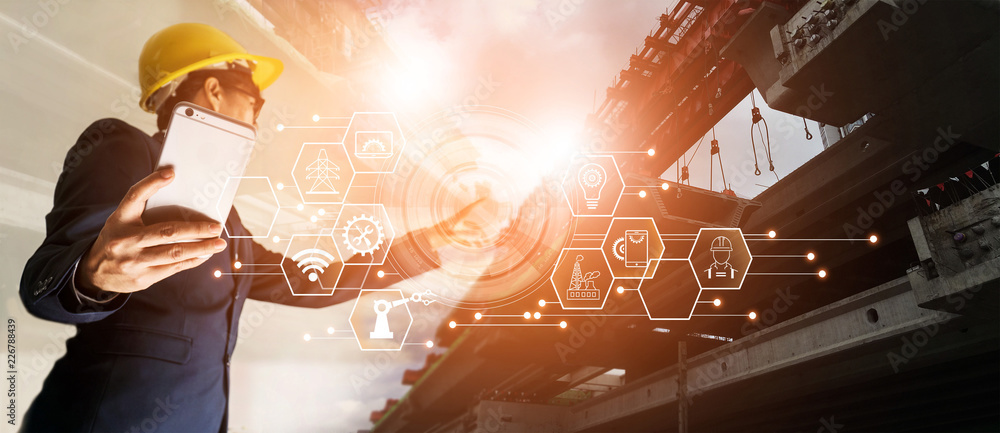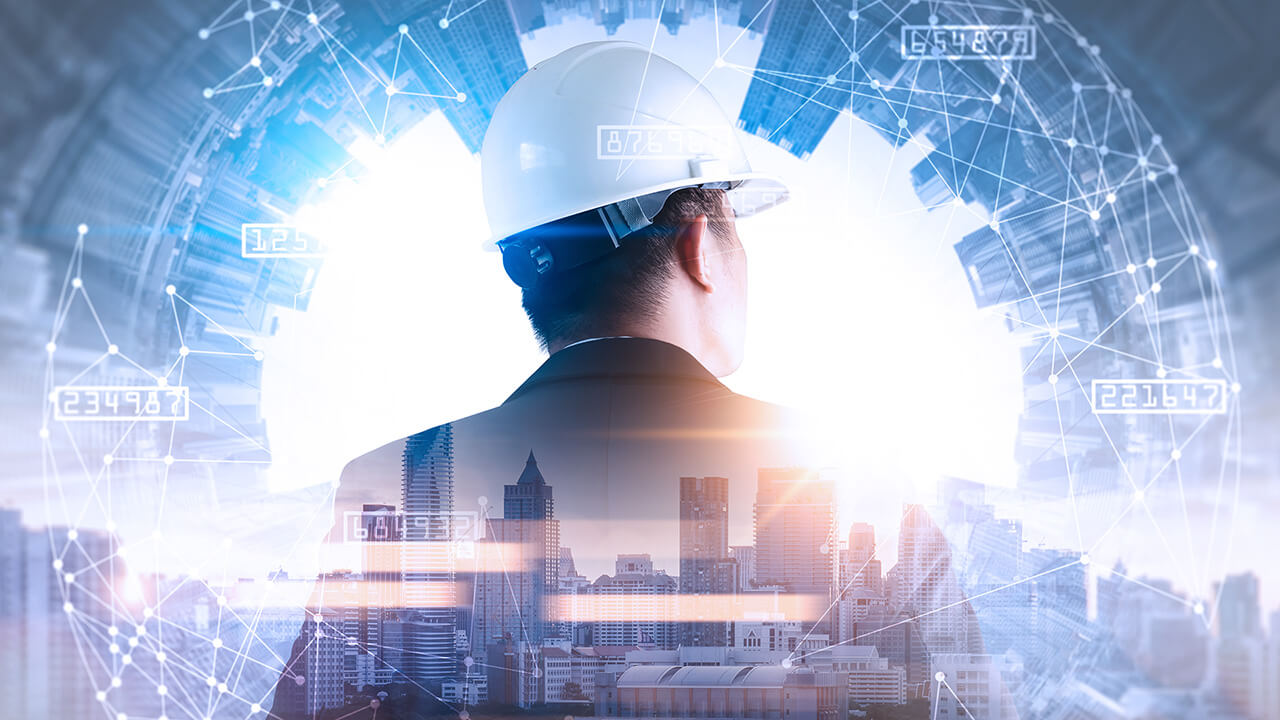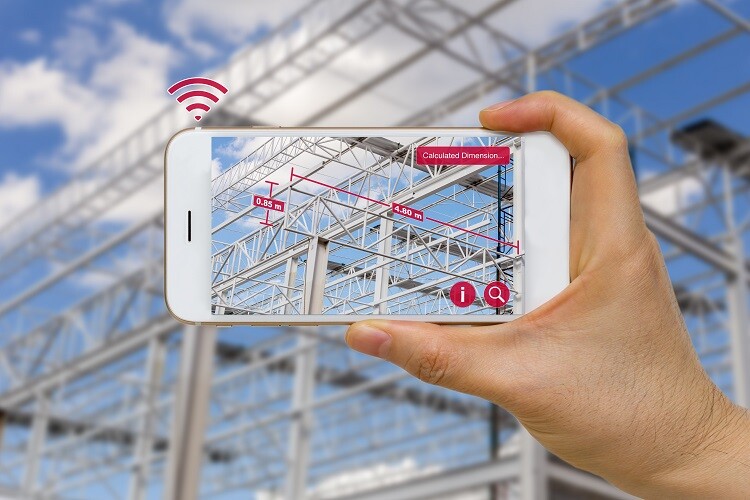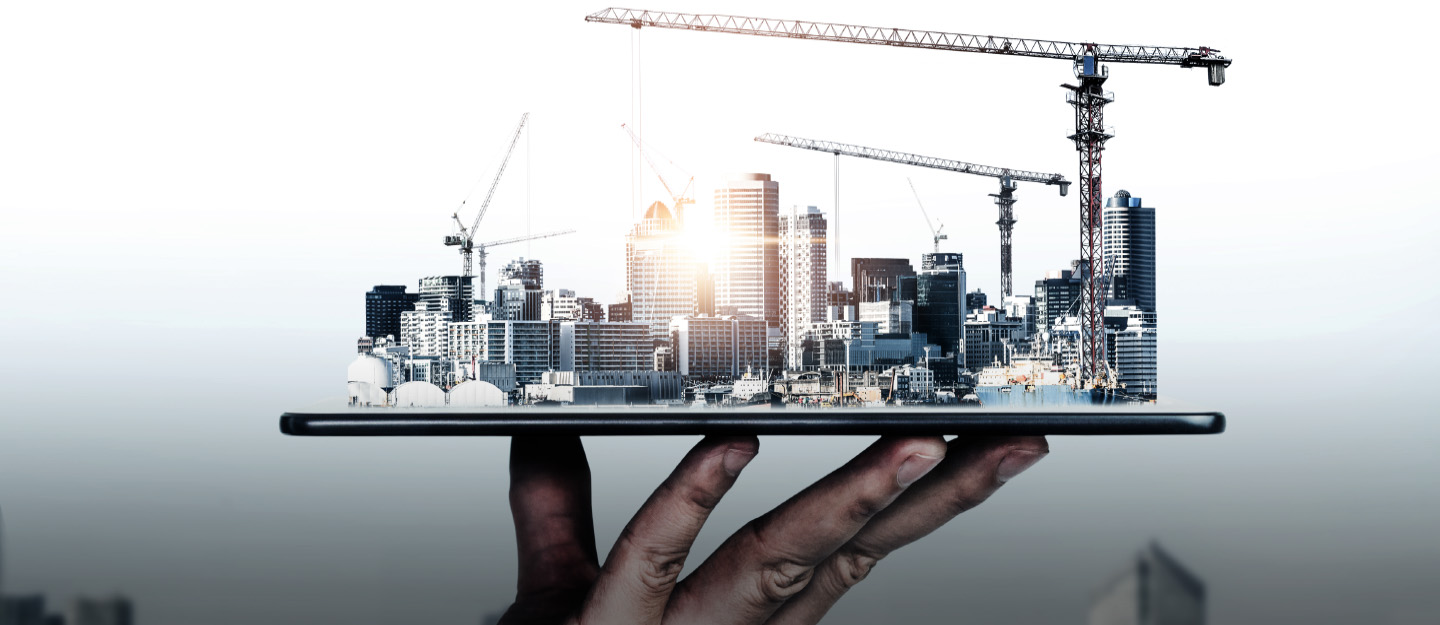Despite COVID-19 impacting the industry, the pandemic has boosted the adoption of technology in the Construction sector.
The Stone Age era is long gone and mankind has evolved from caves to skyscrapers making remarkable progress. Technology has played a vital role in upping the efficiency of construction equipment while providing a fillip to the construction industry and easing the difficulties and challenges typically encountered in the construction project life cycle The construction industry faces a series of problems, right from lack of skilled labour, crunched budgets, time and budget overruns and high risk. The onslaught of COVID-19 has taken a toll on the industry.
However, not all is bleak, and the pandemic has forced the industry to adopt and rethink the way they function, paving ways to bring in innovations for the construction sector.
Building information modelling (BIM), construction robotics, and the utilisation of innovative building materials are all key construction industry developments. In addition, the COVID-19 pandemic necessitates innovative building methods that comply with worker safety and standards. As a result, prefabrication, worker safety, and construction robotics are becoming increasingly popular among start-ups and scaleups. Simultaneously, 3D printing and green building technologies greatly minimise the construction industry’s negative environmental implications.
As the adoption of technology increases, construction companies utilise technology to improve efficiency, eliminate inefficiencies, and adapt to a younger workforce of digital natives who expect to work with technology.
Construction Project Management
Among many forthcoming trends in construction to watch out for shortly is digital project management, which is digital project management, which uses cloud-based software to meet quality, schedule, and cost objectives. Each step of construction has previously been determined by project management. The project manager employs AI-based prediction algorithms to understand the project viability in the first phase. The project manager then assigns everyone milestones and distributes the resources using enterprise resource planning (ERP) software once they’ve been authorised.
Cloud-based technologies, in addition to ERP software, offer transparency and enable large-scale data storage. Project Managers can also use this software to track predicted and actual work outputs and get insight into bottlenecks. Managers create blockchain-based smart contracts after the project to confirm legal responsibilities and avoid financial fraud. Digital construction project management reduces waste, improves labour productivity, and assures that projects are completed on time.
Wearables
Safety is always a hot button item in construction, and correctly so, as the assiduity continuously leads all others in worker deaths every time and this is likely where wearable will have the biggest impact in construction. Being suitable to cover and track workers can go a long way in taking a more visionary approach to worker safety. As construction companies continue to navigate the rough waters of delivering systems in 2021 during the pandemic, the need for wearables to see lesser relinquishment.
Wearables with biometrics detectors can track the worker’s heart rate, body temperature, and other vital signs and incontinently notify safety directors if a hand is potentially suffering from over prostration or getting overheated.
The appeal for being suitable to fluently pierce this type of word on workers has soared since the onset of the pandemic as design directors and point administrators look for ways for early discovery and webbing measures to help the spread of the contagion and avoid design detainments caused by too numerous workers missing work either from constricting COVID-19 or having to counter blockade due to possible exposure.
Artificial Intelligence
AI, like BIM, is a technology that will be used in conjunction with other technologies such as BIM, sensors, wearables, and laser scanners to collect the data that it will then utilize to learn and make choices. it will utilize learning and making choices. Artificial intelligence is a field of study that focuses on developing technology that allows computers and robots to imitate human intellect. In construction technology, machine learning, a type of AI that employs algorithms to learn from data, find patterns, and make choices without needing to be programmed, is most preferred.
Construction projects generate large amounts of data, which is fantastic for AI since it can be used to improve machine learning and anticipate future project outcomes, as well as help with scheduling, risk mitigation, and productivity. The one remaining hurdle to realising AI’s full potential in the construction segment is figuring out how to gather, analyse, and organise all available data accurately with the highest levels of precision in optimum time.
Construction Robotics
Construction is still one of the most labour-intensive businesses in the world. It entails a variety of repetitive and time-consuming procedures and processes which will soon be completed quickly with robotics and automation. Construction robots help decrease human error and fatigue-related losses. For excavation, transportation, load lifting, concrete construction, and demolition, robotics systems may also automate heavy equipment and fleets. This improves the security of construction workers while also lowering the operational time and ultimately operational costs. This will increase the productivity of the project and reduce the labour cost. These Robots also ensure that tasks at seemingly dangerous locations are carried out safely.
Green Buildings
Many developing building sector themes are centred on sustainability. From pre-construction to project closure and decommissioning, green building has become an OR is a popular concept that incorporates ecologically beneficial practices. Green buildings maximise energy and resource efficiency, eliminate waste during construction, and allow for net-zero carbon emissions. Depending on the above-mentioned requirements, many certifications classify buildings as green or sustainable. The US Green Building Council’s LEED certification, also known as Leadership in Energy and Environmental Design, is one of the most popular green building certifications globally. In India, we have GRIHA and IGBC as well. LEED-certified innovative materials for building are fast becoming common.
Worker Safety
As construction companies aim to cut labour expenses, worker safety is still one of the most ignored topics in the construction sector. AI algorithms are used by construction businesses to forecast dangers and take appropriate safety precautions. VR technologies provide immersive training for field workers to lessen the risk of accidents, while AR allows fabricators to scan through the products. Companies employ PPE with IoT sensors to guarantee worker safety. Vibrations, temperature, heart rate, steps, and other signals are detected by the sensors, which convey the data for further analysis. This allows bosses to keep an eye on their employees’ health and productivity from afar. By reducing physical and financial losses, advanced safety devices help both employees and businesses. While this tech is still in its nascent stages, it shall soon become the norm both globally and in India, especially post the COVID-19 pandemic.
Conclusion
If there’s one good conclusion for the building sector, it’s that the pandemic has accelerated construction technology adoption to levels that would have taken decades to accomplish otherwise. This year should be no different, since we’re seeing higher infection counts across the country, and the construction sector will face much of the same issues as last year.
Not just for coping with pandemics, but also for increasing production, removing inefficiencies, recruiting younger employees, and making job sites safer, technology is the future of construction.
Sources:
- 12 Futuristic Construction Technology Trends & Ideas [with Examples] (imaginovation.net)
- Some major trends in construction and real estate to watch out for in 2021 – EducationWorld
- Top 7 Construction Technology Trends for 2021 (constructconnect.com)
- Top 10 Construction Industry Trends & Innovations in 2021 (startus-insights.com)
Disclaimer: The information contained herein have been compiled or arrived at, based upon information obtained in good faith from sources believed to be reliable. The opinions expressed within the content are solely the author’s and can be subject to change. The image featured in this article is only for illustration purposes. If you wish the article to be removed or edited, please send an email to editor@biltrax.com
Discover more from Biltrax Media, A Biltrax Group venture
Subscribe to get the latest posts sent to your email.






















